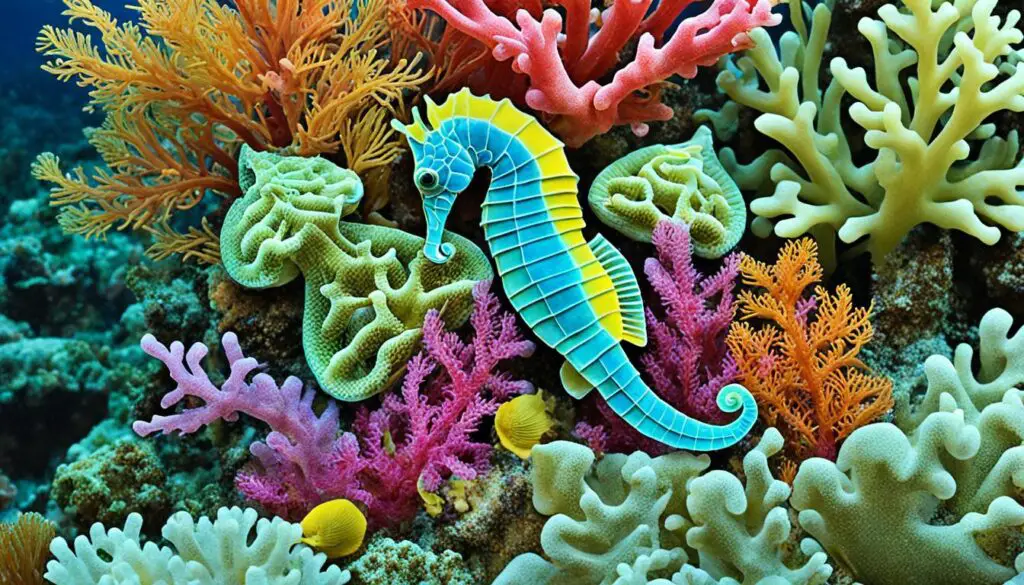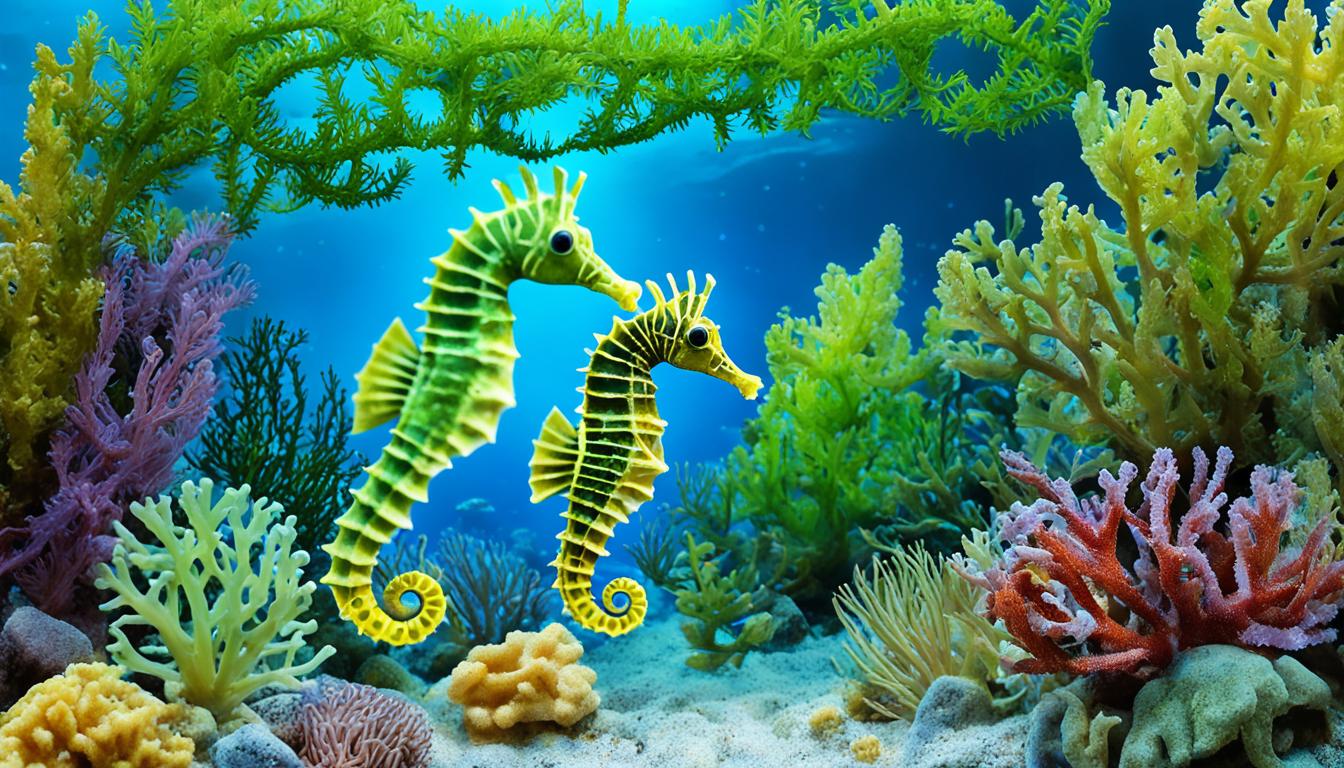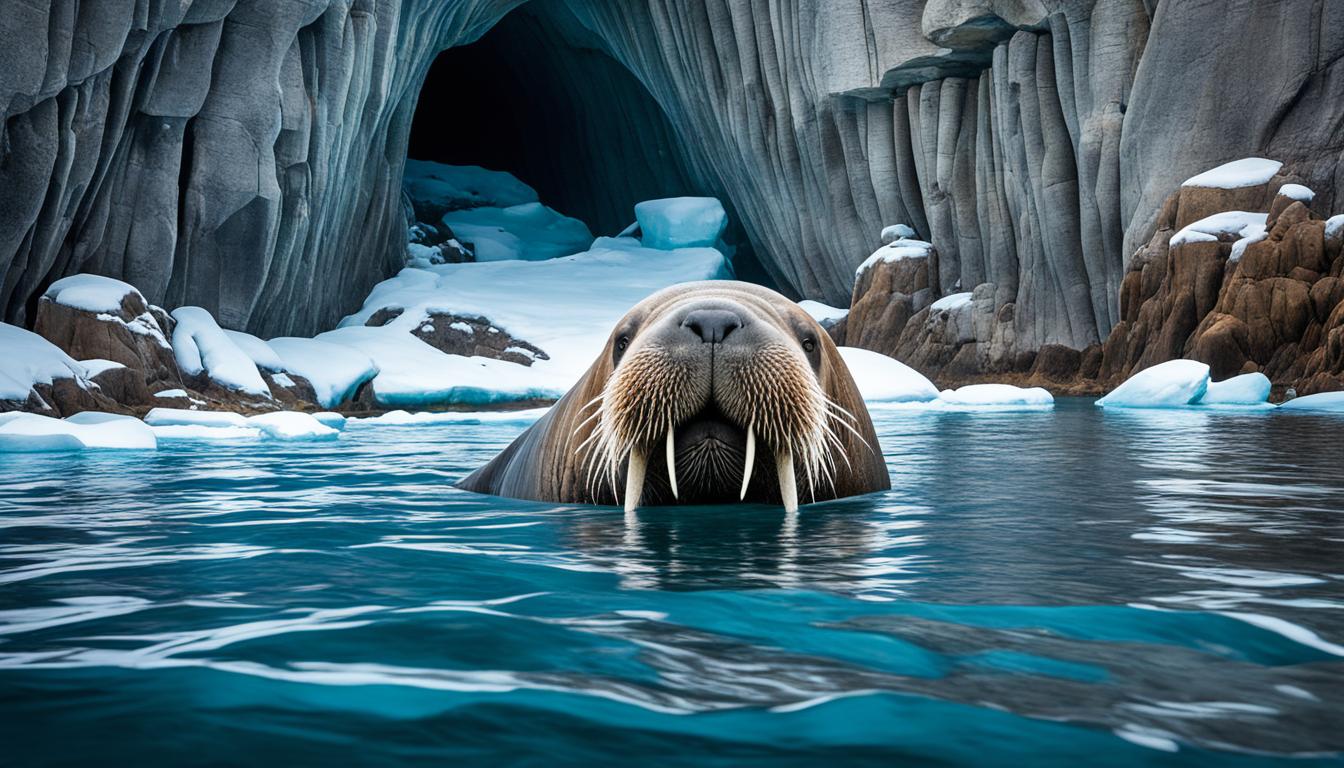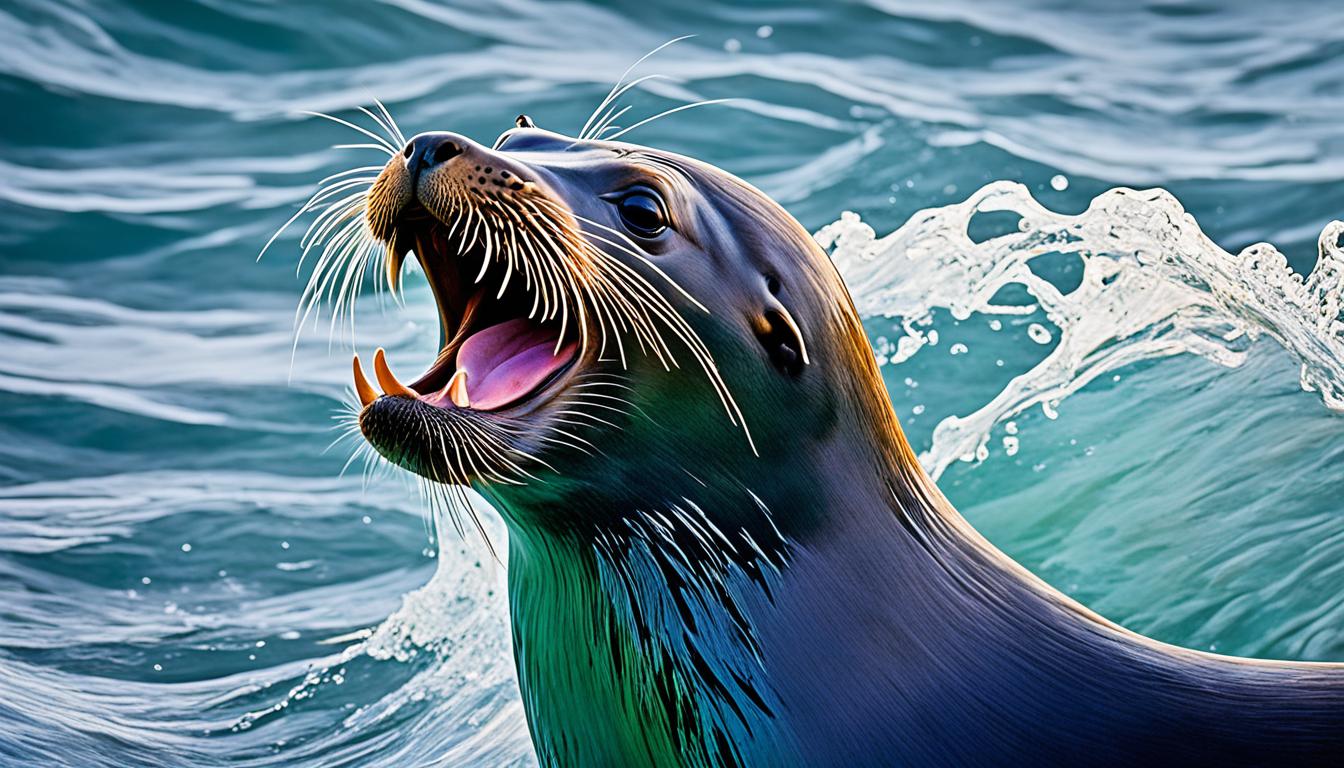Seahorses, part of the Hippocampus genus, are fascinating marine animals with a unique look and ways. You might ask, where do seahorses live? These creatures live mainly in saltwater, enjoying a variety of habitats across tropical and temperate areas. Their special body shape and limited swimming skills mean they need the right place to live. They hide in places that help them avoid predators.
This article will tell you more about where seahorses live. You’ll learn about their favorite places and where they can be found in the ocean.
Understanding Seahorse Habitat
Seahorses are fascinating creatures that live in many different places. They are found in both vast marine areas and delicate estuary ecosystems. These places are perfect for seahorses because they meet their needs.
Marine Environments
Marine environments are key to seahorses’ lives. They live in places like seagrass beds, coral reefs, and mangrove forests. These spots give them shelter and help them hide from predators.
Seahorses like calm and shallow waters where they can stick to plants or other things with their tails. They can change color and have special skin filaments to blend in. This helps them avoid danger.
Estuarine Adaptability
Some seahorses can live in places where fresh and saltwater mix. They can handle different salt levels, so they can live in estuaries. Studies show that seahorse numbers in these areas can change over time with the environment.
This shows how adaptable seahorses are and how they can live in complex places.
Where do seahorses live?
Seahorses live in many parts of the world. They love shallow coastal waters, which are perfect for them. You’ll often find them in the Indo-Pacific region and the West Atlantic.
They like places with seagrass, coral reefs, and mangroves. These spots give them the food and shelter they need.
Seahorses can live up to 100 meters deep, but most stay in shallower waters. They can change to fit different places, which helps them survive. Some even live in tidal lakes and lagoons, making them easy to see.
Seahorses can live in many kinds of places, showing how adaptable they are. Knowing where they live helps us protect their homes and learn about their lives.
| Region | Common Habitats | Depth Range |
|---|---|---|
| Indo-Pacific | Seagrass beds, Coral reefs | 0 – 100 meters |
| West Atlantic | Tidal lakes, Lagoons | 0 – 50 meters |
Seahorse Distribution Around the Globe
Seahorses are found all over the world, with more than 45 species recognized. They live in many marine places, showing how they spread out in different areas. They often live in large groups in some places but are few in others.
Seahorses live in special places like tidal lakes in the Bahamas and calm lagoons in Portugal. These spots show how they can adapt to different environments. They can live in shallow coastal areas and deep sea, showing how tough they are.
The following table summarizes key information about the distribution of notable seahorse species:
| Seahorse Species | Geographic Range | Common Habitats | Population Density |
|---|---|---|---|
| Hippocampus reidi | Western Atlantic | Seagrass beds, coral reefs | Moderate to high |
| Hippocampus guttulatus | Eastern Atlantic | Lagoons, marshes | Variable |
| Hippocampus hippocampus | European waters | Rocky substrates, seagrass | Low to moderate |
| Hippocampus kuda | Western Pacific | Shallow coastal waters | High |
Learning about where seahorses live is key to understanding marine life. It helps us see how special these creatures are. We learn about their homes and how many live in different places.

The Seahorse Ecosystem and Its Importance
Understanding the seahorse ecosystem is key to seeing their big role in the ocean. These magical creatures are not just unique in looks but also help keep the ocean’s balance. They work with other sea creatures to keep marine habitats healthy.
This makes them important signs of how well the ocean is doing.
Role in Marine Biodiversity
Seahorses have complex relationships with many sea animals. They live in places like seagrass beds, coral reefs, and mangroves. These spots are important for many sea creatures to survive.
This shows how connected the seahorse world is to the ocean’s health.
Habitat Conservation Needs
Today, the ocean faces big threats like pollution, climate change, and overfishing. Saving seahorse homes is crucial. It helps seahorses and many other sea animals.
We need to act fast to protect these places. This is key to keeping the ocean and its life healthy.









